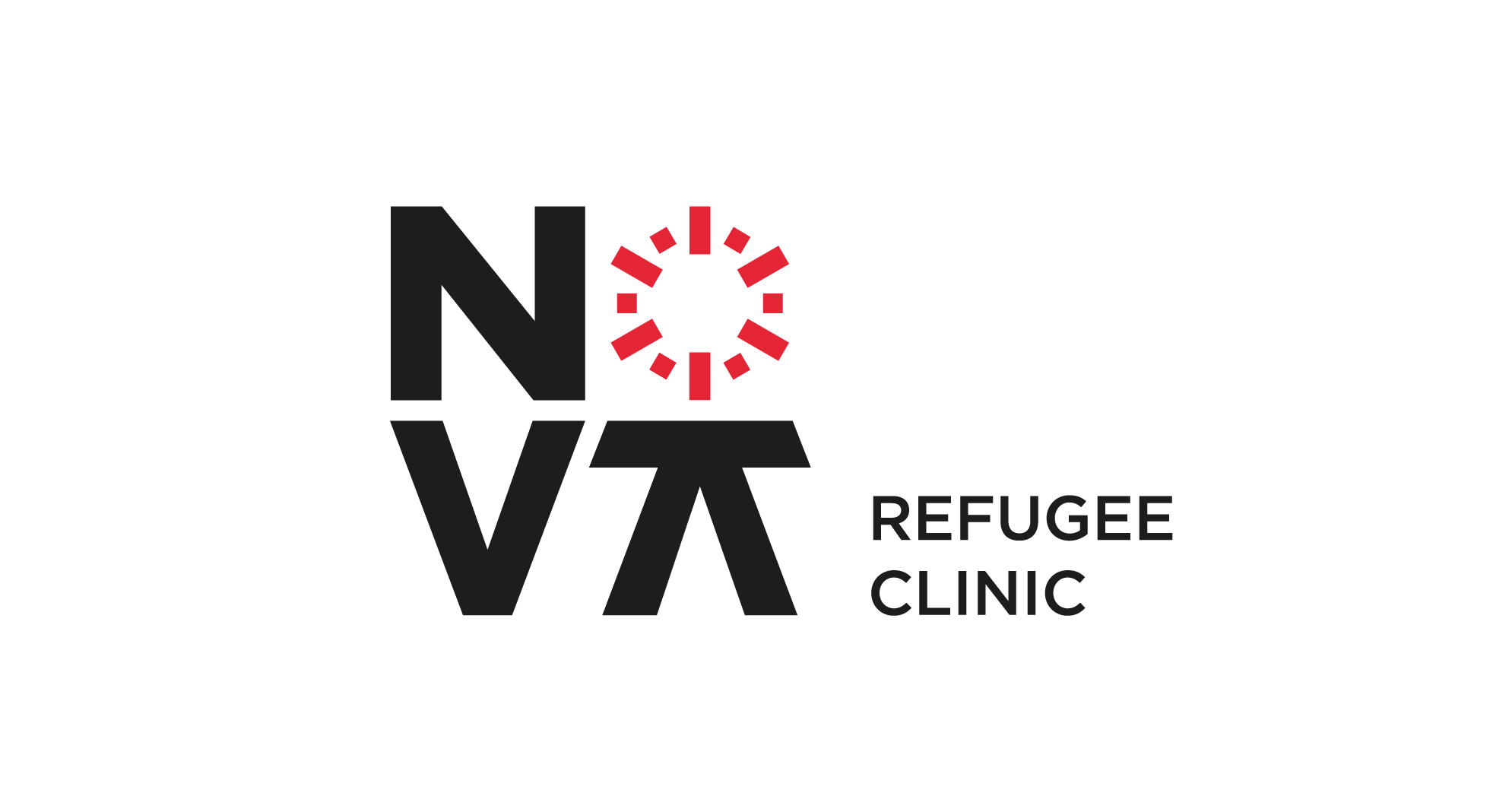The legal scope of the 1951 Refugee Convention: is it broad enough? Gender discrimination issues arising from Article 1
The legal scope of the 1951 Refugee Convention: is it broad enough? Gender discrimination issues arising from Article 1[1]
Joana Fraga Nunes[2]
The 1951 Refugee Convention (hereafter “The Convention”) sets down the definition and the legal context of those seeking asylum under a lawful framework that protects every foreigner who fits into the definition of a “Refugee”.
However, the exhaustive list of Article 1 does not provide any category that can cover women’s needs in terms of their reproductive rights and their inability to enjoy them. A grant for asylum should be, in the end, about the protection of those who fear persecution for exercising their rights; therefore, not being able to voluntarily interrupt its pregnancy or having the possibility of growing its family is against one’s right to self-determination and yet, it is still one of the major factors for oppression in multiple countries in the World.
Considering that reproductive rights are human rights, this paper aims to find any gap in the definition of a “refugee” according to Article 1 of The Convention, that, effectively, inhibits women of obtaining the fair protection they deserve, and consequently, final remarks about a narrow definition will be reflected upon for the purposes of this analyses.
The 1951 Refugee Convention: the historical background behind its ratio legis
The Convention draft was developed considering the effects of World War II that resulted in large fluxes of migration and people seeking protection in other countries, what was later defined as seeking asylum.
Even though, originally, the scope of the Convention was limited to protect European refugees as a consequence of the aftermath of WWII, the 1967 Protocol amended it, and broadened its scope.[3]
While too many consider those changes yet to be increased due the narrow range of article 1, others, mostly governments, consider some provisions too broad, mainly “those that prohibit states from penalizing asylum-seekers entering a country without proper documentation or from returning them to a country where their “life or freedom would be threatened”[4].
All the more so, it is important to remember that there was barely any representation of women in the policy making positions. Moreover, the Convention on the Elimination of All Forms of Discrimination against Women was only approved in 1979, almost 30 years after the Refugee Convention was discussed. That explains in part why gender was not considered when establishing the criteria for defining refugees, the collective awareness back in 1951 did not include a gender-sensitive approach to refugee law (in fact, in any legal branch).
The definition of an asylum seeker according to Article 1
The 1951 Convention Relating to the Status of Refugees laid down the elementary guidelines on the eligibility of those who seek the legal recognition of the Refugee Status, the procedure and the rights and obligations of the Nations which welcome and grant asylum.
It utters that everyone “owing to well-founded fear of being persecuted for reasons of race, religion, nationality, membership of a particular social group or political opinion, is outside the country of his nationality and is unable or, owing to such fear, is unwilling to avail himself of the protection of that country; or who, not having a nationality and being outside the country of his former habitual residence as a result of such events, is unable or, owing to such fear, is unwilling to return to it”[5] is qualified to be recognised as de iure refugee, hence, granted the refugee status.
The legal foundation of Article 1 finds its inspiration in Article 14 of the Universal Declaration of Human Rights of 1948[6], which states the right of all persons to seek and enjoy asylum from persecution. Additionally, the right to be granted asylum is accompanied with getting such status without suffering any discrimination of any kind, as laid down in Article 7 of the UDHR. This provision guarantees equality before the Law, and that everyone shall be treated equally: further scrutiny will be made on this matter considering that there is in fact a concern when it comes to the possibility of women seeking asylum without having any legal grounds supporting that appeal.
On this matter, Article 3 of the Refugee Convention states that its provisions shall be applied without “discrimination as to race, religion or country of origin”[7]. Once again, the thorough definition does not allow for the broadness it is required in terms of discrimination when it comes to gender.
Here is why: In light of what has been said, it is important to understand that gender is a form of discrimination: “gender differences and relations change with the historic, cultural and geographic context of the situation – meaning that the experience of being a man or a woman changes with time and place”[8]. However, gender discrimination is not only limited to women, despite being mostly a concern for women considering the historical disadvantages, which include violence mostly targeting women and children, which led to historical inequality before the law – that is so much the more when it comes to reproductive rights. Despite the fact that reproductive rights are not only restricted to women, obstetric care (or the lack of it) is one of the major concerns why women seek protection in other countries. With that in mind, we shall go deep into the definition of reproductive rights.
The importance of reproductive rights
Reproductive rights include, among others, the right to a safe and legal abortion, the right to birth control (and other contraceptive methods), the right to have access to reliable reproductive healthcare and the right to education and other means that allow for the well informed and conscious reproductive choices[9].
As such, these rights are gender related, meaning that they are associated with the social role of women. Nonetheless, political opinions and ideology keep conflicting with the core of reproductive rights, which in their core are human rights. Even though reproductive rights’ legal context is well defined on the international level, which regulates State’s positive actions towards the implementation of such rights as we will identify, many governments continue to deny them in their plenitude.
For instance, at the European level, the European Convention on Human Rights establishes in its article 14, the prohibition of discrimination, as well as the Treaty on the Functioning of the European Union (article 19) and the Charter of the Fundamental Rights of the EU (articles 3, 20 and 21, regarding respect for equality in hereof the integrity of the human person).
Regarding, the international level, the International Covenant on civil and Political Rights and the International Covenant on Economic, Social and Cultural rights, both protect non-discrimination under Article 3. Moreover, the Convention on Elimination of all forms of discrimination Against Women – CEDAW, specifically establishes in its article 12 (1) that State parties must take appropriate measures to eliminate discrimination against women in the field of health care[10], by providing equal means that ensure the possibility of women to make equal decisions concerning their reproductive rights (considering addition and special needs are required in order to guarantee a safe medical intervention, for instance).
This legal instrument is extremely important in respect of women’s rights: it guarantees that States Parties have certain legal obligations in terms of taking positive measures to ensure compliance with these international norms. Furthermore, article 2 of the CEDAW creates an obligation on States to take the necessary measures to adopt legislative and political measures to ensure the protection of reproductive rights and the establishment of conditions to make them applicable, as it would be the construction of adequate infrastructures or monetary accessible services provided by the State: this is to say that budgetary priorities should also bear in mind the necessity of an adequate infrastructure for women to exercise their rights. Consequently, budgetary priorities must include a gender-sensitive approach, to ensure, specific gendered rights, such as reproductive rights.
How impactful may be reproductive rights in the process of seeking asylum
The possibility of voluntarily interrupting one’s pregnancy or having the chance of choosing how many kids one wants to bear, are rights (within the scope of reproductive rights) that are often precluded by state policies that punish women, by objectifying and politicising women’s bodies, which leads to the ‘legitimisation’ and ‘naturalisation’ of violence against women’s bodies. Examples of such State violence against women’s bodies include, for instance, countries which currently or in a recent past did not acknowledge women’s right to interrupt their pregnancies[11]. Another example of such State violence against women’s bodies includes, for instance, China’s one child policy, which prohibits women of having more than one child. These are just a couple of examples of States’ violence against women’s bodies, which are a severe violation of women’s reproductive rights and therefore, should be considered as one of the criteria for granting women asylum, if in such need, and to be recognised as de iure refugees.
It should, then, be acknowledged that a woman, who takes a decision based on her possibility to do so, despite her government’s outlooks on the matters of the abovementioned cases, or any others, should be granted asylum if she is at risk of being persecuted on the grounds of that decision making process.
Finally, it is important to mention that the possibility of being granted asylum considering the Article 1 motive of belonging to a particular “social group” is not a reliable source, when it comes to gender. Considering the case of [2003] UKIAT 00207 before the Immigration Appeal Tribunal in the UK, it was discussed if Iranian women could be granted asylum on the grounds of belonging to a particular group. On that matter the Court decided against because there was no evidence that there were two different groups: the Iranian women and the Iranians in general. The court considered that membership shall be recognized accordingly with the possibility of identifying shared beliefs or practices which leads us to settle that “The way the court applied the law clearly indicates the problem of protecting persecuted women as a social group rather than recognizing gender as a basis of persecution”[12].
Also, the inadequacy of the UNHCR in defining what a social group means or who is included in one[13] led to different decisions (even judiciary) of what it is expected, when applying the Law.
Consequently, considering that the main point is the need for protection, not necessarily the technicalities of what a social group is, asking for asylum on the grounds of belonging to one may not lead to a positive outcome hence the urge for a broader interpretation of Article 1.
Conclusion
Even though, this discussion hasn’t had the attention
it should get, a brief analyses of the subject leads us to conclude that Article
1 should include “gender” as one of the motives why women should be granted
asylum: not only because it would be in line with the international protection
legal texts already devote to reproductive rights, but also because, otherwise,
a discriminatory list sets aside women from being granted asylum, a right they
should be given with certainty, as the fear of suffering maltreatment as a
consequence of exercising their reproductive rights, is as real as all of the
other circumstances identified under Article 1 of the Convention.
HOW TO CITE:
J.F. NUNES, The legal scope of the 1951 Refugee Convention: is it broad enough? Gender discrimination issues arising from Article 1(1), NOVA Refugee Clinic Blog, February 2021, available at <https://novarefugeelegalclinic.novalaw.unl.pt/?blog_post=the-legal-scope-of-the-1951-refugee-convention-is-it-broad-enough-gender-discrimination-issues-arising-from-article-1>
[1] This paper was the result of a thought process driven by the investigation line on Migration & Gender of NOVA’S Refugee Clinic. I would like to thank Tatiana Morais for all the initiatives we have been developing within the line and her comments on this paper, which were highly important for the conclusions taken.
[2] Joana Fraga Nunes is a LLB finalist student at NOVA School of Law.
[3] The Legal Framework For Protecting Refugees, published by UNHCR, September 2011, accessed on Feb 22nd: https://www.unhcr.org/about-us/background/4ec262df9/1951-convention-relating-status-refugees-its-1967-protocol.html
[4] Has the Refugee Convention outlived its usefulness?, published on 26th of March 2012 by “The New Humanitarian”, accessed on Feb 22nd: https://www.thenewhumanitarian.org/analysis/2012/03/26/has-refugee-convention-outlived-its-usefulness
[5] Article 1, Convention relating to the Status of Refugees, adopted on 28 July 1951 by the United Nations Conference of Plenipotentiaries on the Status of Refugees and Stateless Persons convened under General Assembly resolution 429 (V) of 14 December 1950.
[6] Universal Declaration of Human Rights, adopted on 10 December 1948 by the United Nations General Assembly under General Assembly resolution 217 A.
[7] Article 3, Convention relating to the Status of Refugees, adopted on 28 July 1951.
[8] Prithivi, Abhinaya, “Gender Discrimination Against Refugees” (2017). International Immersion Program Papers. 59. http://chicagounbound.uchicago.edu/international_immersion_program_papers/59
[9] Amnesty. (2019). Sexual and Reproductive Rights. [online] Available at: https://www.amnesty.org/en/what-we-do/sexual-andreproductive-rights/ [Accessed 2 Dec. 2019].
[10] Ohchr.org. (2019). Available at:
https://www.ohchr.org/documents/professionalinterest/cedaw.pdf
[11] El Salvador, Malta, the Vatican, Chile, the Dominican Republic, and Nicaragua are examples of countries who refuse abortions to woman in any circumstances, according to the Business Insider, Dec 15 2016, accessed on 17th Feb 2021: https://www.businessinsider.com/countries-strictest-abortion-laws-2016-12
[12] Prithivi, Abhinaya, “Gender Discrimination Against Refugees” (2017). International Immersion Program Papers. 59.
http://chicagounbound.uchicago.edu/international_immersion_program_papers/59
[13] UNHCR Guidelines on International Protection, Membership of a particular social group within the context of Article 1A(2) of the 1951 Convention and/or its 1967 Protocol relating to the Status of Refugees, May, 2002



